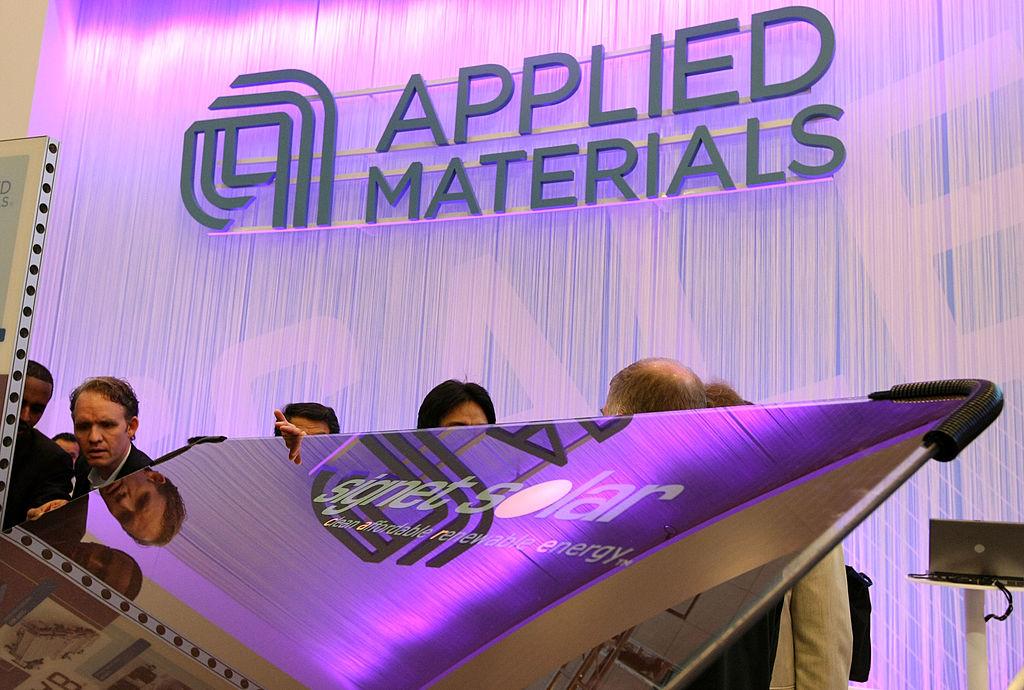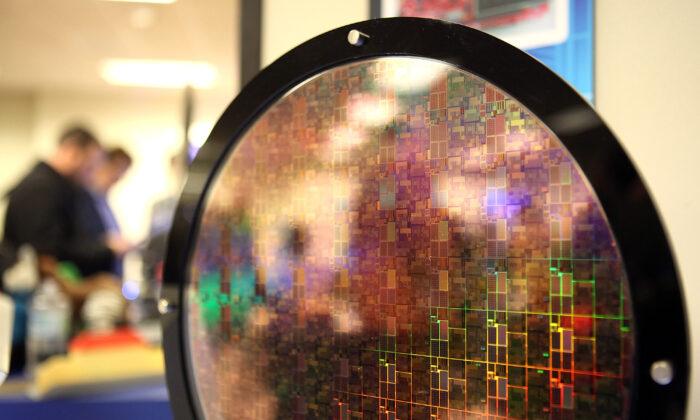Commentary
Who controls the past controls the future, we’re told. No, who controls the semiconductors controls the future. The U.S. government knows this, and so does the Chinese Communist Party (CCP). The battle for semiconductor primacy is very much on. Who will emerge victorious? More importantly, who will control the future?
The importance of semiconductors cannot be emphasized enough. Without them, no microchips; without those microchips, no cell phones; no Zoom calls (perhaps a blessing); no mobile banking; no online food orders; no Amazon deliveries. Domestic appliances like microwaves and washing machines require chips to function. Without the necessary chips, there would be no cars, buses, trains, or planes. No GPS, and no Wi-Fi. In short, no life. A semiconductor arms race is in full swing, with China and the United States engaged in an existential battle.
On Nov. 15, President Joe Biden signed the Secure Equipment Act into effect. The new law bars the Federal Communications Commission (FCC) from considering or authorizing equipment that poses a security risk to the United States.
Sen. Ed Markey (D-Mass.) commented: “With President Biden’s signature, we are taking strong action to protect our nation from global technological threats that can undermine our future prosperity. I look forward to now working with the President and every member of the FCC to implement this critical measure.”
The law is designed to prevent the FCC from issuing licenses to highly compromised companies like Huawei, ZTE, and a number of other CCP-backed enterprises. Clearly concerned, the CCP is frantically searching for loopholes in the new law.
China might be the richest country in the world, but it cannot thrive without U.S. tech. The CCP is fully aware of this fact, as a recent report in Bloomberg clearly demonstrated. Huawei, a company rocked by U.S. sanctions, “is planning to license its handset designs to third parties as a way to gain access to critical components,” according to the report. Although the Secure Equipment Act is desperately needed, not to mention long overdue, there’s every reason to believe that the CCP will find ways to overcome it.
Another Bloomberg piece outlines the ways in which China is “accelerating plans” to replace the United States as the leader in technology. The CCP is “quietly empowering a secretive government-backed organization to vet and approve local suppliers in sensitive areas from cloud to semiconductors,” the report said.
The secretive organization is called the Information Technology Application Innovation Working Committee, and its sole purpose is to elevate China to the next level. To do so, it must first dislodge the United States from the tech throne.
Enabling the Enemy
Sadly, a number of U.S tech manufacturers appear more than willing to assist Beijing in its effort to outfox American lawmakers. As Forbes warns, escalating tensions between Beijing and Washington “have not stopped some U.S. tech manufacturers from turning record profits from their sales to Chinese companies—many of which are likely complicit in the PRC’s [People’s Republic of China] mission to weaponize U.S. technologies.”
Three companies in particular—Applied Materials, KLA, and LAM Research—have incredibly close ties to China. Over the past year, according to Forbes, thanks to dealings in Beijing and beyond, Applied Materials’ stock “has nearly doubled ($74 to $141).” This should concern U.S. lawmakers; after all, Applied Materials is a global leader in materials engineering solutions for the manufacture of semiconductors. Meanwhile, over the past year, KLA, a company with headquarters in California, saw its profits increase by 60 percent. LAM Research, one of the world’s leading semiconductor companies, saw profits jump by 30 percent.
Such business dealings appear to be a danger to U.S. national security. The Biden administration should consider using export controls—such as commodity controls—to protect the country.

Strength in Numbers
All is not lost, however. Although China has aspirations of semiconductor supremacy, 60 percent of the world’s semiconductors are manufactured in Taiwan; and a company in South Korea manufactures a further 20 percent of the global supply. With the importance of semiconductors already clarified, it’s easy to see why the Chinese regime is so dogged in its attempt to control Taiwan.
The recent virtual meeting between Biden and CCP leader Xi Jinping brought plenty of debate, but no breakthroughs. The only way of combating communist China and winning the semiconductor arms race is by solidifying ties with both Taiwan and South Korea. Biden has promised to protect the self-ruled island if the Chinese regime attacked. Meanwhile, the United States and South Korea look set to expand their military alliances; why not their semiconductor alliances, too?
To achieve tech-based dominance, the CCP will continue to lie, steal, and cheat; the United States must defend itself by forming more strategic, future-oriented alliances. Time is very much of the essence. To control the future, one must plan accordingly.






Friends Read Free